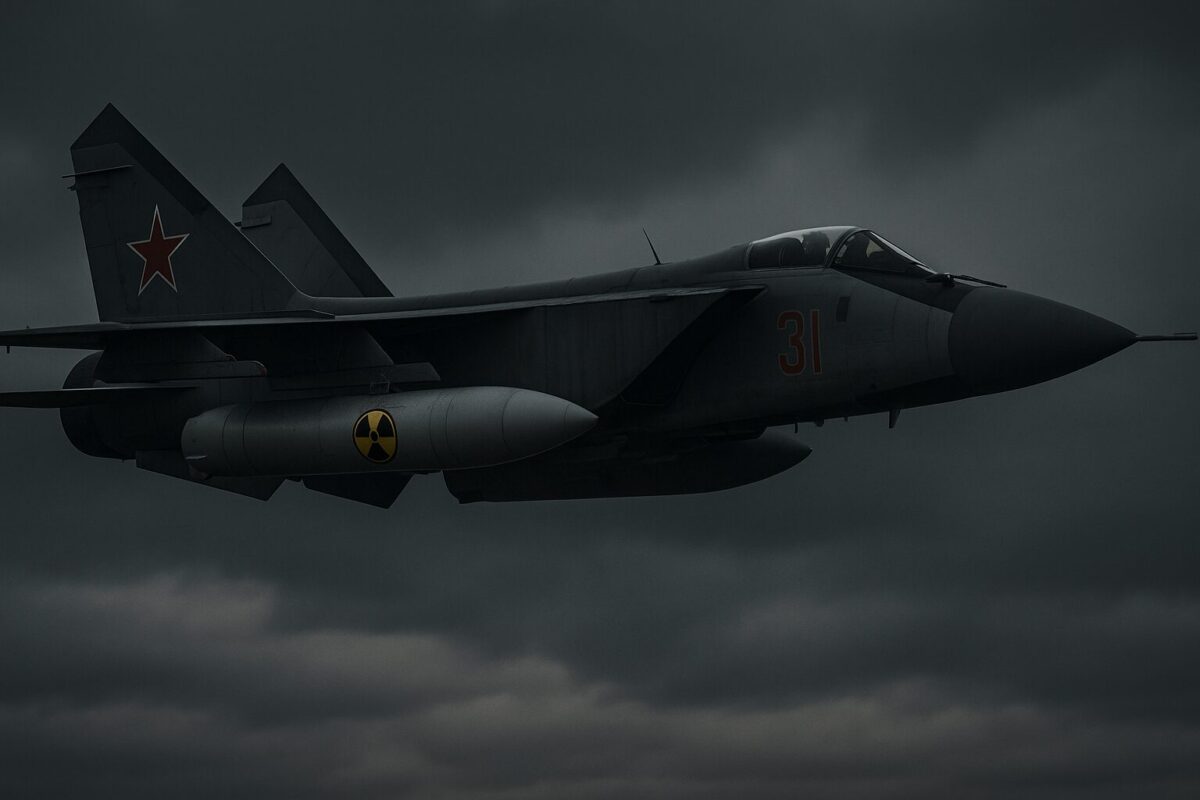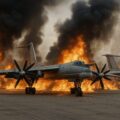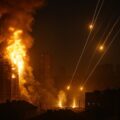
Russia Arms Fighter Jets with Nuclear Air-to-Air Missiles – What It Means for NATO and Global Security
U.S. intelligence has issued a stark warning: Russia is rearming its fighter aircraft — and not just with missiles, but with nuclear warheads.
For the first time in decades, we’re not talking about strategic nuclear weapons launched from silos or submarines. This time, it’s air-to-air missiles, mounted on fighter jets, carrying tactical nuclear warheads.
Sounds like a Cold War flashback? Not quite. It’s something new — and deeply alarming.
What Happened: Official U.S. Intelligence Disclosure
According to a recent report from the U.S. Defense Intelligence Agency (DIA), published as part of the Worldwide Threat Assessment 2025, Russia has already deployed modified R-37M missiles with nuclear warheads on its combat aircraft.
“Russian fighter jets, including the MiG-31BM, are being equipped with long-range nuclear payloads capable of striking targets up to 400 km away,” the report states.
This information has also been confirmed by sources at FlightGlobal, Janes, The War Zone, and Military Watch Magazine.
What Kind of Missile Is This? In Plain Terms:
We’re not talking about city-targeting cruise missiles. These are air-to-air missiles — designed to destroy other aircraft. But now, they carry a nuclear payload.
- Type: R-37M (NATO designation: AA-13 “Axehead”)
- Range: Up to 400 km
- Speed: Up to 7,300 km/h (nearly Mach 6)
- Warhead: Nuclear, up to 10 kilotons
- Carrier: Primarily MiG-31BM; partially Su-35 and Su-57
This means a missile launched from Russian airspace could destroy a target hundreds of kilometers away — with a nuclear detonation in the air.
Why This Is a Big Deal
1. It’s Not About Ukraine – It’s About NATO
These weapons are not intended for battlefield use against Ukrainian forces. They’re aimed at NATO surveillance aircraft, AWACS systems, and reconnaissance planes — key elements of Western air control.
2. First Deployment Since the Cold War
Previously, nuclear weapons were mounted on strategic bombers or kept in silos. Now, they’re being loaded onto fighter jets — increasing mobility, unpredictability, and the difficulty of early detection.
3. A Shift in Nuclear Doctrine
Russia is moving toward a doctrine of “escalate to de-escalate” — threatening limited nuclear strikes to halt enemy advances. But this strategy doesn’t guarantee control. It guarantees chaos.
Relevant
Can These Missiles Reach Ukraine or NATO?
Yes. Depending on the launch point, the strike radius covers:
- Lithuania, Latvia, Estonia — if launched from Kaliningrad
- Poland (including Warsaw)
- Finland and Sweden — from the northern flank
- Western Ukraine — if launched from Kursk or Belgorod regions
These are air-to-air missiles, designed to destroy aircraft — but armed with nuclear warheads. That means they wouldn’t hit cities, but planes. Still, the consequences of a nuclear detonation in the sky could be catastrophic.
Why Is Russia Doing This?
1. To instill fear and apply pressure
This isn’t first-strike weaponry. It’s intimidation. The message: you can’t fly nearby without consequences — even in neutral airspace.
2. To make escalation look like an option
Moscow wants the West to hesitate: what if they actually do it?
It’s a game of ambiguity — and that’s what makes it dangerous.
3. To make NATO air presence risky
Air-to-air missiles with nuclear warheads directly challenge NATO’s concept of airspace dominance and surveillance.
What Do Western Analysts Say?
Jonathan Black, analyst at RUSI (London):
“This isn’t tactical weaponry. It’s political pressure. And that’s what makes accidental catastrophe more likely.”
The War Zone (U.S. analysis outlet):
“This marks a new tier of hybrid nuclear escalation. The chance of use is low — but the risk is real.”
It’s Not “the Beginning of the End” — But It Is a Turning Point
Russia has done something unprecedented: deployed nuclear weapons on fighter jets, making them mobile, stealthy, and psychologically powerful.
This isn’t about an imminent strike. It’s about changing the atmosphere.
It’s about the fact that the sky — even at 10 kilometers up — is no longer safe.
This is a game of nerves. A strategy of fear.
And that’s where the real danger lies: because nuclear weapons used for coercion are no longer deterrents — they are provocations.
The world must respond not with panic — but with cold readiness.
Because if we stay silent now, the next missile may not be in the sky.
It may already be in the headlines — after the explosion.















